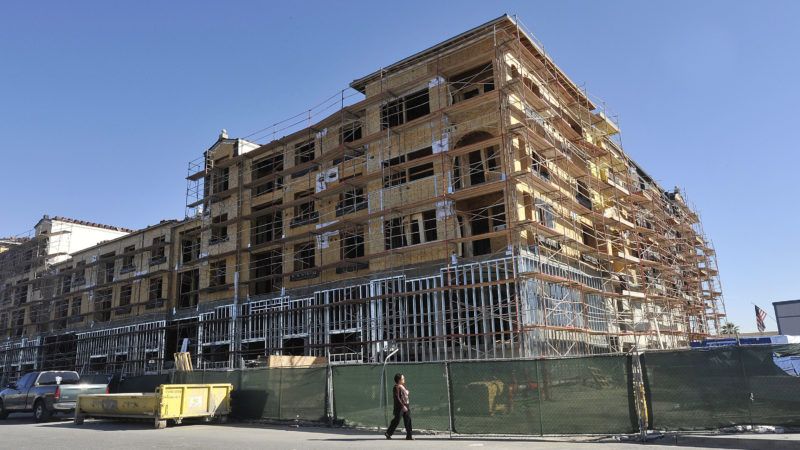COVID-19 Could Force City Planners To Rethink Their Priorities
The coronavirus shutdown might alter buying patterns, as more people flee tightly packed cities for suburban, exurban, and rural areas.

All we need are ankle bracelets and Americans would understand what it's like to be sentenced to home confinement. In a short drive to a grocery store in town last week, I spotted six patrol cars that were out presumably to enforce the stay-at-home orders. Even without those bracelets, we're essentially prisoners in our homes.
My house sits on six acres—and my dogs, goats and chickens are blithely unaware of the social-distancing requirements (although the cats are getting grumpy about all the extra attention). Life is fairly normal for my family, as we work from home and take breaks by doing chores at the barn.
Even in the nearby tract suburbs, life doesn't seem that different—at least until we queue up along six-foot markers outside the grocery store. There's traffic, activity and some semblance of normalcy. In San Francisco, it's a different story. Life has ground to a halt, and we read ominous reports from Ground Zero—in Manhattan, Seattle, Seoul, and other cities where people live packed together.
For years, urban planners have been singing the praises of population density. In fact, California' planning model over the past couple decades has revolved around something called New Urbanism. The idea is to set aside as much land as possible as open space—then require developers to build high-density projects in the existing urban footprint. The public still likes single houses with yards, but policymakers are trying to limit that option.
The new rules are justified as part of the state's battle against climate change. When Jerry Brown was attorney general, he even sued San Bernardino County for permitting too many sprawling developments. The idea that urbanization helps the planet is debatable, given that packed urban centers create heat islands. But the concept fits neatly with existing urban-planning ideology, which decries suburbs as soulless and rural living as wasteful.
Yet after the dust clears from the lockdowns, more Californians will likely be tempted to rethink the high-density status quo. Obviously, diseases spread more quickly where people live cheek by jowl. When a health crisis spreads across the globe, people living in less-dense environs are better able to cope with the madness. My heart goes out to urban dwellers, stuck in their tiny apartments and risking arrest by going to the park for fresh air.
"Density is a factor in this pandemic, as it has been in previous ones," wrote Richard Florida in the CityLab website. "The very same clustering of people that makes our great cities more innovative and productive also makes them, and us, vulnerable to infectious disease." Some big cities have handled the crisis better than others. Some rural areas have high infection rates, too. But, as an urban studies professor, he's distressed at big-city vulnerability.
I find it distressing, too. I like cities for the same reasons as these urbanists and plan on moving back to one after our time on the acreage is done. There's something exhilarating about the variety and vibrancy in cities, even though urbanists can be overly dismissive of the thriving social connections and civic life that take place in suburban and rural areas. I've lived in big cities where no one knows their neighbors, as well as tightly knit "sprawl" suburbs filled with a sense of community.
In reality, the suburbs largely are a product of government planning and subsidy, so there's no reason that the government should restrict the construction of mid-rises and other higher-density projects in these areas. Some opponents of recent state legislation to give developers the right to build such projects are just as meddlesome as the New Urbanists who want to use government to force only the construction of these projects. They want to legislate their preferences rather than let the market decide.
But while the "get off my lawn" suburban crowd can be awfully annoying, the "you will live in high-density housing" crowd is even worse, given that their prerogatives are in control on virtually every local planning board (not to mention at the state level). Those restrictive policies, by the way, are the most significant reason that so few Californians can afford to buy homes now. The restrictions have reduced housing supply and driven up building costs.
The long-term economic effects of the coronavirus shutdown on the nation's housing markets is far from clear, of course. Ultimately, it could alter buying patterns, as more people flee tightly packed cities for suburban, exurban, and rural areas that are less susceptible to societal breakdown when pandemics or other crises unfold. Unfortunately, California's urban-planning rules restrict the ability of people to make those choices.
At the very least, I'd hope that California planners rethink their belief that density always is a good in and of itself—and realize the best way to move forward is to allow builders and buyers as many housing choices as possible.
This column was first published in the Orange County Register.



Show Comments (26)